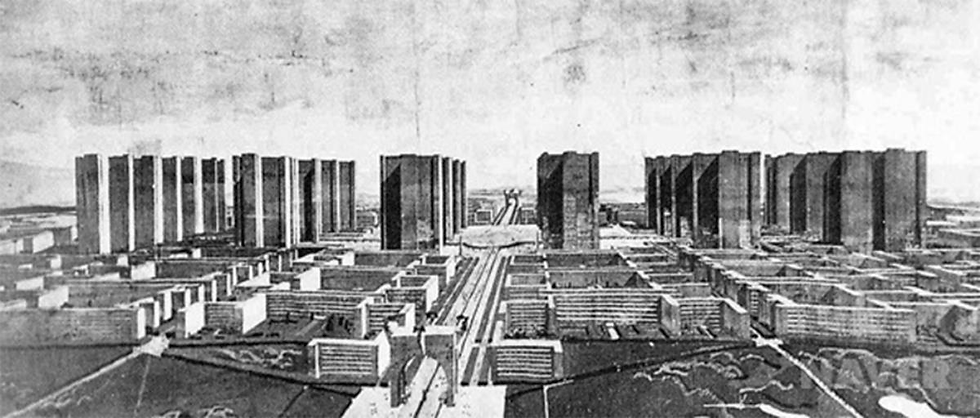Conflict and Displacement in Urban Space
- Zoeanna Upadhyay

- Sep 22, 2021
- 2 min read
Conflict is expressed in urban space in several ways- division and occupation of land, blockades, destruction of historical buildings and eviction from homes. In Israel, conflict is expressed in the built form through retreat and exclusion, two ways that are not mutually exclusive. This means offering protection to one part of the population by building protective walls, private roads, and security (retreat) while simultaneously imprisoning the other through the use of walls, fences, checkpoints, etc. (exclusion). The division of space creates segregation, making it less accessible and undermining the sense of belonging of its inhabitants.
The division of space is closely linked to the destruction of property and political colonialization of the land. An instance of this was the partition of India and Pakistan in 1947, when millions of Muslims were evicted from their homes, forced out of Delhi, and had to escape to Pakistan, while Hindus fled Karachi, taking with them only what they could carry. The confiscation of land, extensive destruction of mosques and temples and so-called ethnic cleansing are examples of the atrocities committed by religious extremism.

In Jerusalem, this religious divide runs deep, and perhaps that is why instances of conflict are most clearly seen in sites of ritual. Its turbulent 5000-year history puts it at the centre of three world religions-Christianity, Judaism, and Islam. The division of land is religious, with the Muslim quarter containing the Dome of Rock and the al-Aqsa Mosque, the Christian quarter distinguished by the Church of the Holy Sepulchre, and the Jewish presence expressed through Kotel, a remnant of the retaining wall of the mount on which the Holy Temple once stood. Religion also plays an important role in defining territory because of its close link to the collective identity of people. Hence, it lies at the heart of the Arab-Israel conflict.

In domestic space, the same disturbing demolition pervades. The house demolition policy used by the Israeli government to demolish ‘unrecognized’ Palestinian and Bedouin villages is a tool used to control the city’s non-Jewish population. But as politically charged and religiously charged as these actions are, at its core lies the humanitarian tragedy of people, children and families living under constant threat of losing their homes.
References
1. Dalrymple, William. 'The Great Divide The violent legacy of Indian Partition'. The New Yorker, June 22, 2015. https://www.newyorker.com/magazine/2015/06/29/the-great-divide-books-dalrymple (Links to an external site.)
2. Piquard, Brigitte & Swenarton, "Learning from architecture and conflict", The Journal of Architecture, 16:1, (2011), 1-13, DOI: 10.1080/13602365.2011.557897 (Links to an external site.)
3. BBC, "What makes Jerusalem so holy?". 30 October 2014. https://www.bbc.com/news/world-middle-east-26934435 (Links to an external site.)
4. Marcello, Flavia "Conflict and displacement lecture 3" Swinburne University of Technology Modules, August 2021.
5. Meade, Terry "Violence and domestic space: demolition and destruction of homes in the occupied Palestinian territories". The Journal of Architecture, 16:1, (2011). 71-87, DOI: 10.1080/13602365.2011.547011






Comments